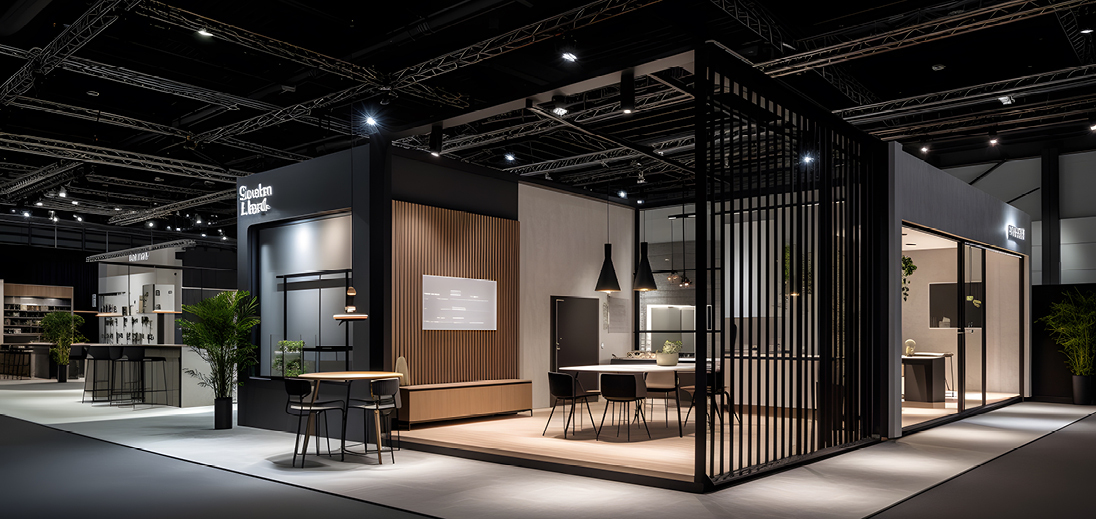Paris 2024 and everything you need to know about the ISO 20121 norm
In April 2024, the ISE (Institute for Sustainable Events) released an updated version of ISO 20121. The goal is to meet today's ESG standards for event sustainability.
In April 2024, the ISE (Institute for Sustainable Events) released an updated version of ISO 20121. The goal is to meet today's ESG standards for event sustainability.
Let’s dive into everything you need to know about the ISO 20121 norm relative to stand design and event management.
What is the ISO 20121 norm?
Since 2012, the ISO 20121 norm has been the international standard for sustainable event management systems. The Institute for Sustainable Events (ISE) is an online development academy for event industry professionals who want to upskill in event management sustainability.
At the initial launch of ISO 20121, 12 years ago, the world was not as committed to Net Zero as it is today. Many things have changed since then about sustainability measures.
To match the current standards and expectations of the public, the ISE released a new version of ISO 20121 this year. The goal is to push companies to adopt a sustainable approach to stand design and event management.
ISO 20121 also applies to B2B companies in the visual communications sector. Conferences and exhibitions are typical B2B events.
ISO 20121 gives a strategic and operational framework to embed ESG issues across all areas of any event. The idea is to consider sustainable alternatives to any element at any event.
How to apply ISO 20121 to your event?
ISO 20121 gives a framework that applies to all aspects of stand designs and event management. It includes actions that we can classify in 5 categories: material selection, energy efficiency, waste management, transportation, and social responsibility. Let’s zoom in on each of them.
ISO 20121 gives a framework that applies to all aspects of stand designs and event management. It includes actions that we can classify into 5 categories: material selection, energy efficiency, waste management, transportation, and social responsibility. Let’s zoom in on each of them.
Material selection

When an event takes place, the first thing we think about is the infrastructure. Whether they happen indoors or outdoors, events require quite a few elements like a venue, a stage, stands, audio and visual equipment, furniture, etc. ISO 20121 guidelines ensure event organisers select and use sustainable materials in stand designs.
Energy efficiency

Events can be huge energy pits. Following ISO 20121 guidelines guarantees to stay energy efficient throughout the event. This includes using LED lighting and energy-efficient appliances.
Waste management
People consume during an event: visitors, organisers, and workers. ISO 20121 guidelines anticipate waste by using less packaging and single-use materials.
Transportation

We might forget it, but organising an event also involves transportation. Transporting people and transporting goods has a footprint. That’s why it’s better to think about sustainable alternatives like public transportation or carpooling. It’s even better if vehicles are low-emission.
Social responsibility

Last but not least, social responsibility is also an important issue to tackle. The ISO 20121 framework includes guidelines to ensure maximal accessibility for all attendees, promote fair labour practices, and support local communities.
How to be ISO 20121 certified like the Paris 2024 Olympic Games?

ISO 20121 certification was launched by the London 2012 Olympic Games Organizing Committee. Since then, it has been one of the sustainability requirements for all editions of the Summer and Winter Olympic Games.
Paris 2024 achieved ISO 20121 certification in 2022. The Paris 2024 Games will be the first to apply the updated version of ISO 20121.
5 stages to get ISO 20121 certified
To get ISO 20121 certified, event organisers must go through 5 stages:
- Conduct a gap analysis between the current and desired state of your event sustainability,
- Develop and implement a sustainability management system that meets the requirements of ISO 20121,
- Conduct internal on-site audits on the management and draft a report to assess your strengths and weaknesses,
- Get your ISO 20121 certificate valid for three years from a third-party certification body,
- Continue to improve the sustainability management system.
How the IOC did it for the Paris 2024 Olympics
The International Olympic Committee (IOC) is the governing body of the Olympic Games.
They conducted the ISO 20121 certification in November 2022. It is valid for three years and requires annual validation audits and assessments at regular intervals. The IOC’s current sustainability objectives are:
- Prevent waste by avoiding single-use plastics, renting equipment locally, proposing menus that reduce food waste, and producing biogas and compost from food waste,
- Add sustainable criteria into purchasing decisions: favouring certified and locally-sourced food products and eco-labeled products, choosing reusable and recyclable decoration and signage materials,
- Reduce carbon dioxide emissions by introducing new event formats enabling remote participation,
- Encourage participants to use public transport,
- Make event participants aware of the sustainability measures in place.
You want to meet every stakeholder’s requirements at the event: your customers, institutions, local partners, and attendees. Regulations are becoming stricter, and it takes effort to meet them and even go beyond.
You want to motivate your staff and those involved in the event chain. The first step is to commit your social and environmental performance to continuous improvement.
How Antalis can help you now
At Antalis, we took these standards into account for your visual communication. That’s how we created the SwitchGreen Box, your ultimate asset to find alternative materials to PVC communication and display products. The box contains a selection of the best alternatives for your key applications: panels, tarpaulins and textiles, adhesives, and rigid synthetics.







